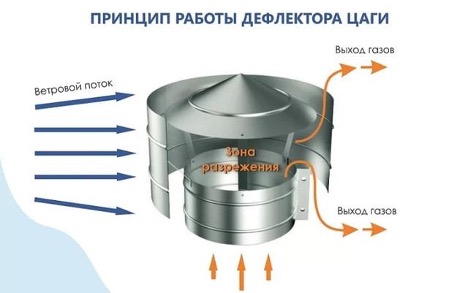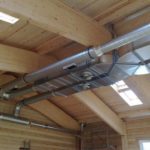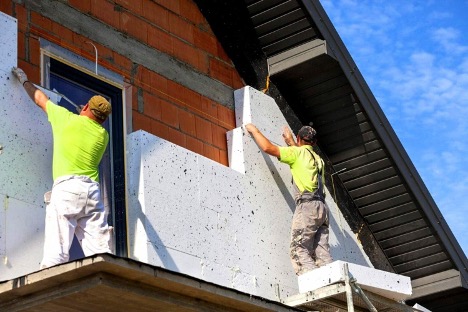Ventilation train deflector: calculation using the air speed formula
Calculation of the deflector is a key step in the design of ventilation systems. After all, a properly selected deflector provides effective air removal and protection from precipitation. The main task in the calculation is to determine the optimal dimensions of the device. This will allow you to achieve maximum efficiency with minimal hydraulic losses.

The content of the article
What is a ventilation train deflector?
The TsAGI deflector is a type of ventilation deflector developed by the Central Aerohydrodynamic Institute (TsAGI) of Russia. This device is designed to improve draft in ventilation and chimney systems. The effect is achieved by using the energy of moving air. The TsAGI deflector effectively protects ventilation ducts from precipitation, dust and debris. At the same time, it enhances natural traction without the need for additional mechanical devices.
The deflector design includes several main parts:
- a housing that directs the air flow;
- a cover or umbrella that reflects the oncoming flow, thereby creating a vacuum that increases the outflow of air from the system.
The operating principle is based on the aerodynamic properties of the air flow. In them, the wind speed around the deflector creates a zone of low pressure above the ventilation duct. This helps increase traction.
TsAGI deflectors are widely used in residential, industrial and public buildings. They are needed to increase the efficiency of ventilation and heating systems. They are also used to prevent backdraft, when wind can block the normal outflow of air from the system. Due to their efficiency and relative ease of installation, TsAGI deflectors are a popular choice for many projects related to providing reliable and efficient ventilation.
What mechanisms and tools are there to calculate air speed and productivity?
A number of mechanisms and tools are used to calculate air velocity and performance in ventilation systems. They help engineers and designers determine the optimal parameters for efficient system operation. These tools can range from simple mathematical formulas to complex software solutions for simulating airflow. Let's look at some of them:
Mathematical formulas

Anemometers
Anemometers are devices for measuring the speed of air flow. They can be either mechanical or digital, including hot-wire anemometers and vortex anemometers. Used for direct measurements of air speed in ventilation systems and at the outlet of deflectors.
Computer modelling
Computational Fluid Dynamics (CFD) software allows for complex calculations of the aerodynamic characteristics of ventilation systems, including air speed, flow distribution, turbulence and heat transfer. Examples of such programs include ANSYS Fluent, SimScale, and Autodesk CFD. They provide detailed visualization of flows and can take into account many factors that affect system performance.
Pitot tubes
Pitot tubes are used to measure air velocity based on the difference in static and dynamic pressure in the flow. This method is suitable for accurate local measurements of air velocity in ventilation ducts and near deflectors.
Software for calculation of ventilation systems
Specialized software such as Revit MEP, MagiCAD and DuctSizer allow you to design ventilation systems by automatically calculating the necessary parameters, including air speed and overall system performance, based on input data about the room and ventilation requirements.
The use of these tools and mechanisms allows you to optimize ventilation system designs, ensuring the required heating or cooling efficiency while complying with all HVAC codes and standards.
Parameters for selecting a deflector
When selecting a deflector for ventilation, several critical parameters must be taken into account:
- Diameter and shape of the ventilation duct.
- Required performance of the ventilation system.
- Operating conditions, including possible wind loads and climatic features of the region.
Calculation of air speed and productivity
One of the key aspects in the calculation is determining the air velocity in the baffle, which directly affects the overall performance of the system. The performance of the turbo deflector is calculated based on the aerodynamic characteristics of the deflector and the speed of the incoming air flow. Correct calculation allows you to optimize the operation of the ventilation system and ensure the required level of heating or cooling of the premises.
The calculation process includes an analysis of the geometric parameters of the deflector and the use of specialized software solutions, such as the TsAGI deflector calculation program, which allows you to accurately determine the required equipment characteristics for specific operating conditions.
The correct approach to the calculation and selection of deflectors ensures efficient and economical operation of ventilation systems, preventing a number of potential problems associated with insufficient ventilation or excessive energy consumption.




